The Labour Market The Supply and Demand for

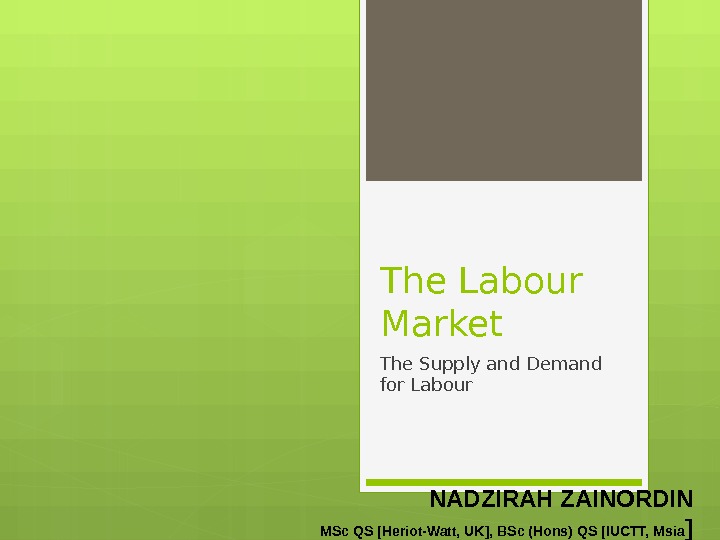
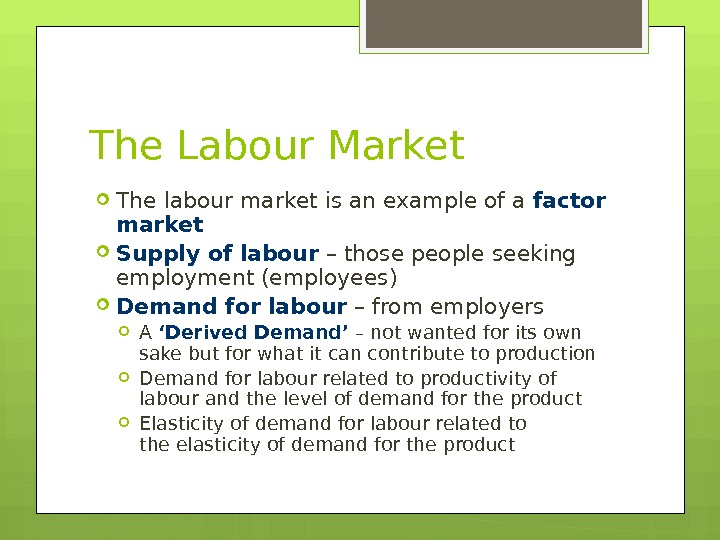
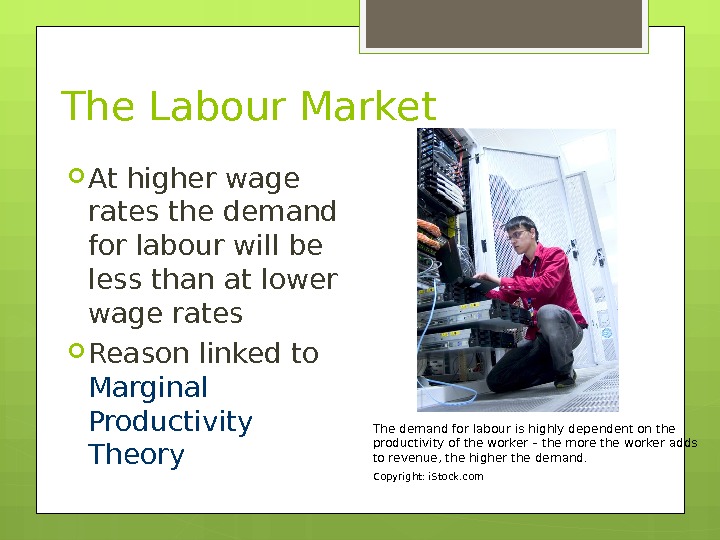
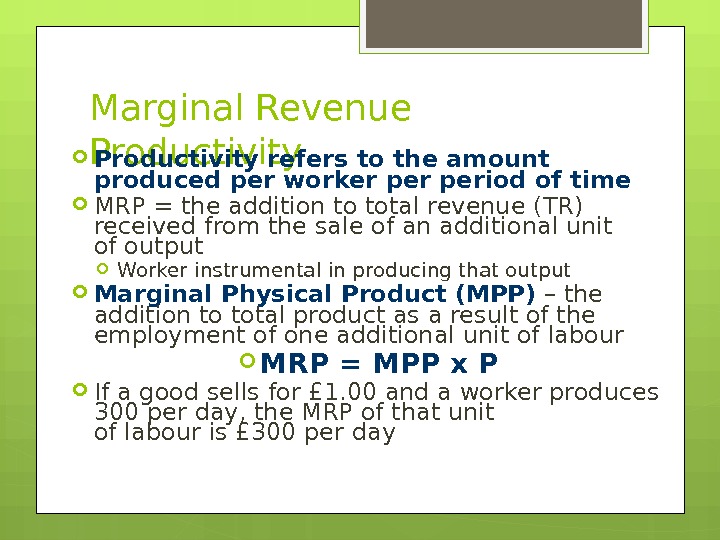
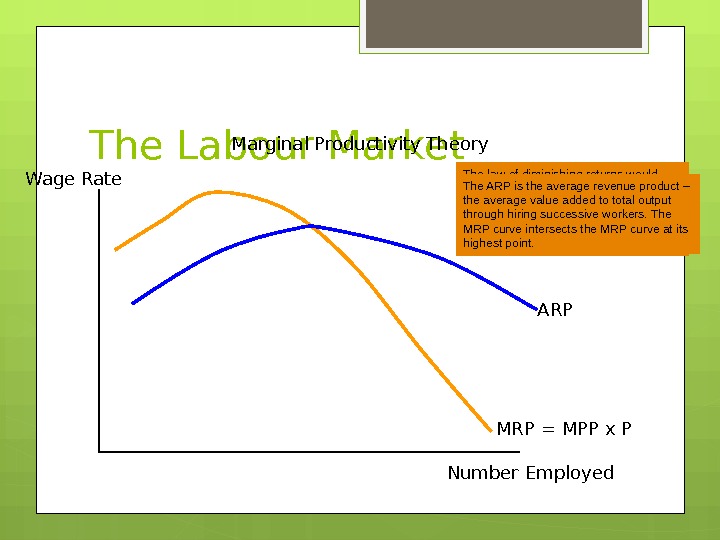
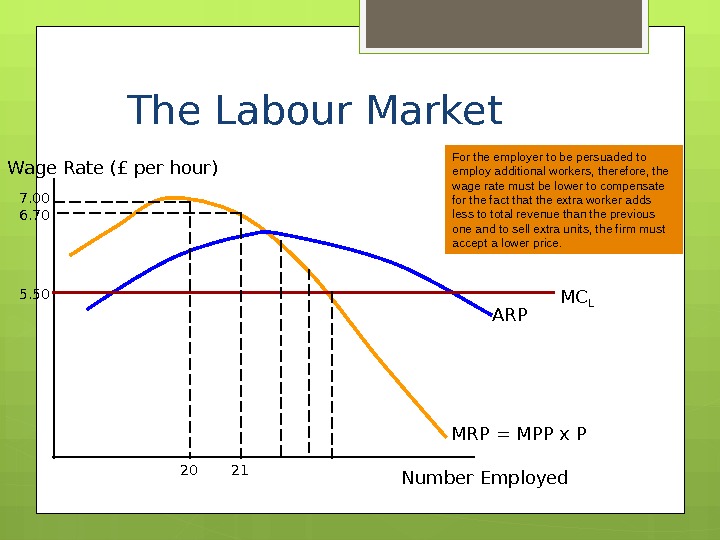
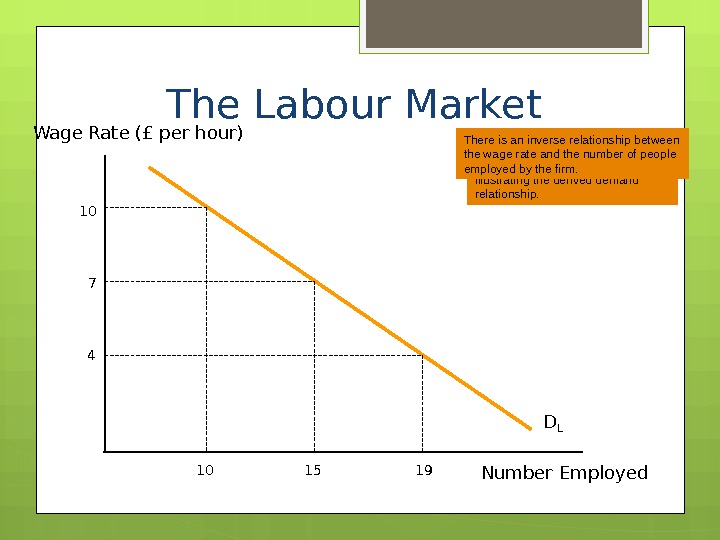
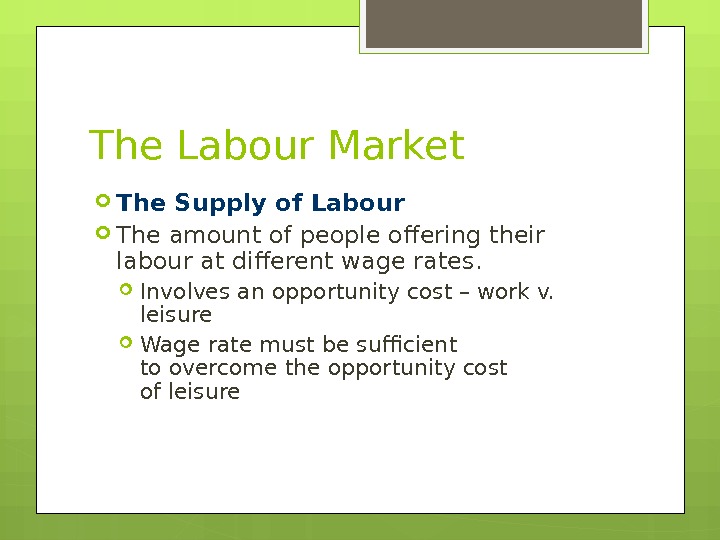
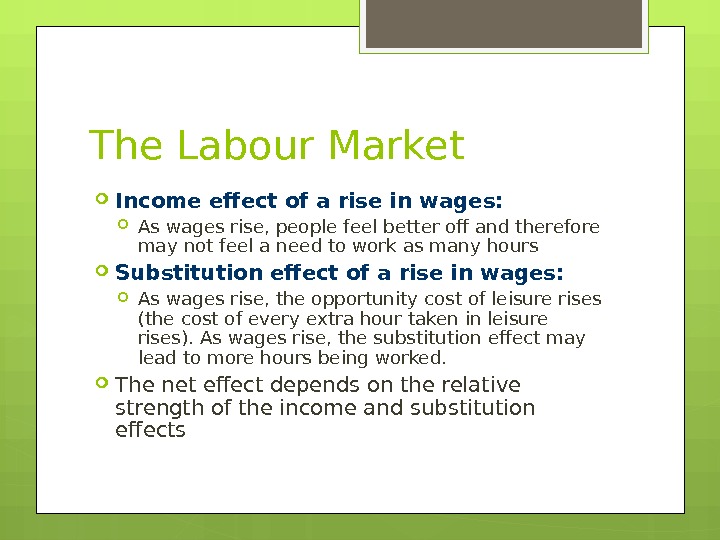
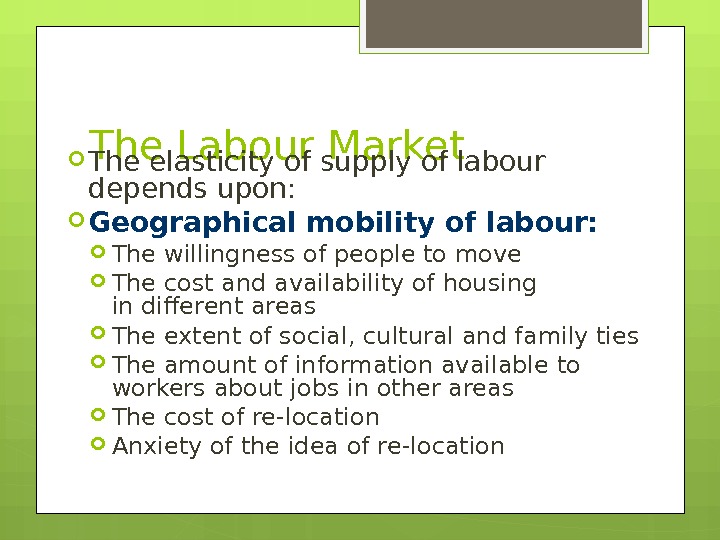


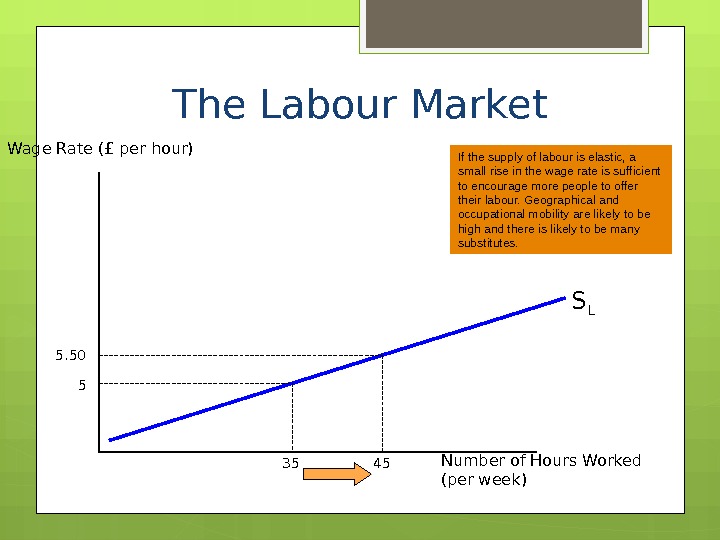



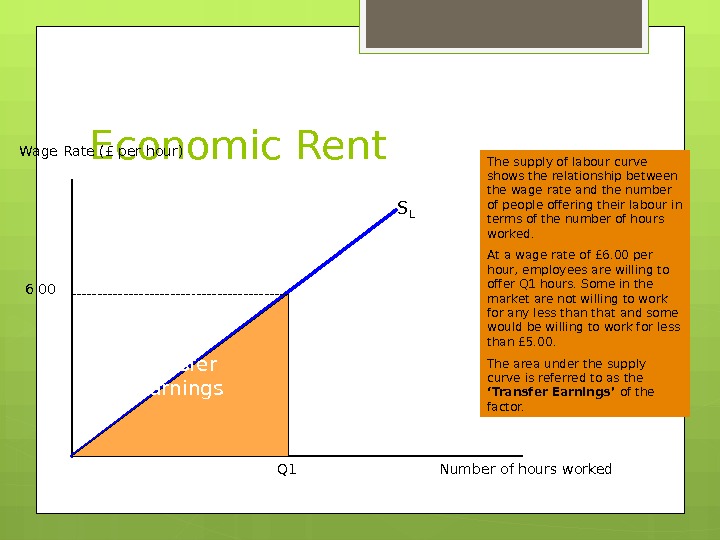


- Размер: 2.1 Mегабайта
- Количество слайдов: 19
Описание презентации The Labour Market The Supply and Demand for по слайдам
![The Labour Market The Supply and Demand for Labour NADZIRAH ZAINORDIN MSc QS [Heriot-Watt, UK], BSc The Labour Market The Supply and Demand for Labour NADZIRAH ZAINORDIN MSc QS [Heriot-Watt, UK], BSc](/docs//lect_3_-_demand_amp_supply_2_images/lect_3_-_demand_amp_supply_2_0.jpg) The Labour Market The Supply and Demand for Labour NADZIRAH ZAINORDIN MSc QS [Heriot-Watt, UK], BSc (Hons) QS [IUCTT, Msia ]
The Labour Market The Supply and Demand for Labour NADZIRAH ZAINORDIN MSc QS [Heriot-Watt, UK], BSc (Hons) QS [IUCTT, Msia ]
 The Labour Market The labour market is an example of a factor market Supply of labour – those people seeking employment (employees) Demand for labour – from employers A ‘Derived Demand’ – not wanted for its own sake but for what it can contribute to production Demand for labour related to productivity of labour and the level of demand for the product Elasticity of demand for labour related to the elasticity of demand for the product
The Labour Market The labour market is an example of a factor market Supply of labour – those people seeking employment (employees) Demand for labour – from employers A ‘Derived Demand’ – not wanted for its own sake but for what it can contribute to production Demand for labour related to productivity of labour and the level of demand for the product Elasticity of demand for labour related to the elasticity of demand for the product
 The Labour Market At higher wage rates the demand for labour will be less than at lower wage rates Reason linked to Marginal Productivity Theory The demand for labour is highly dependent on the productivity of the worker – the more the worker adds to revenue, the higher the demand. Copyright: i. Stock. com
The Labour Market At higher wage rates the demand for labour will be less than at lower wage rates Reason linked to Marginal Productivity Theory The demand for labour is highly dependent on the productivity of the worker – the more the worker adds to revenue, the higher the demand. Copyright: i. Stock. com
 Marginal Revenue Productivity refers to the amount produced per worker period of time MRP = the addition to total revenue (TR) received from the sale of an additional unit of output Worker instrumental in producing that output Marginal Physical Product (MPP) – the addition to total product as a result of the employment of one additional unit of labour MRP = MPP x P If a good sells for £ 1. 00 and a worker produces 300 per day, the MRP of that unit of labour is £ 300 per day
Marginal Revenue Productivity refers to the amount produced per worker period of time MRP = the addition to total revenue (TR) received from the sale of an additional unit of output Worker instrumental in producing that output Marginal Physical Product (MPP) – the addition to total product as a result of the employment of one additional unit of labour MRP = MPP x P If a good sells for £ 1. 00 and a worker produces 300 per day, the MRP of that unit of labour is £ 300 per day
 The Labour Market Marginal Productivity Theory Wage Rate Number Employed MRP = MPP x P ARPThe law of diminishing returns would suggest that as successive units of labour are employed, the addition to total product will rise at first but then decline. The MRP represents the value added to total output by successive workers. The ARP is the average revenue product – the average value added to total output through hiring successive workers. The MRP curve intersects the MRP curve at its highest point.
The Labour Market Marginal Productivity Theory Wage Rate Number Employed MRP = MPP x P ARPThe law of diminishing returns would suggest that as successive units of labour are employed, the addition to total product will rise at first but then decline. The MRP represents the value added to total output by successive workers. The ARP is the average revenue product – the average value added to total output through hiring successive workers. The MRP curve intersects the MRP curve at its highest point.
 The Labour Market Wage Rate (£ per hour) Number Employed MRP = MPP x P ARPIn a competitive labour market, the individual firm is not big enough to influence the wage rate. The marginal cost of labour is a horizontal line at the existing market wage rate. MC L 5. 50 207. 00 Employing the 20 th unit of labour costs the firm £ 5. 50 per hour but that labour adds £ 7. 00 per hour to total revenue through their work. It is worth employing that extra unit of labour. 6. 70 21 The 21 st unit of labour adds slightly less to total revenue (£ 6. 70) but still costs £ 5. 50 and so is worth employing. There will thus be an incentive for the firm to continue to employ additional units of labour until the MRP = Wage rate. For the employer to be persuaded to employ additional workers, therefore, the wage rate must be lower to compensate for the fact that the extra worker adds less to total revenue than the previous one and to sell extra units, the firm must accept a lower price.
The Labour Market Wage Rate (£ per hour) Number Employed MRP = MPP x P ARPIn a competitive labour market, the individual firm is not big enough to influence the wage rate. The marginal cost of labour is a horizontal line at the existing market wage rate. MC L 5. 50 207. 00 Employing the 20 th unit of labour costs the firm £ 5. 50 per hour but that labour adds £ 7. 00 per hour to total revenue through their work. It is worth employing that extra unit of labour. 6. 70 21 The 21 st unit of labour adds slightly less to total revenue (£ 6. 70) but still costs £ 5. 50 and so is worth employing. There will thus be an incentive for the firm to continue to employ additional units of labour until the MRP = Wage rate. For the employer to be persuaded to employ additional workers, therefore, the wage rate must be lower to compensate for the fact that the extra worker adds less to total revenue than the previous one and to sell extra units, the firm must accept a lower price.
 The MRP curve therefore represents the demand curve for labour illustrating the derived demand relationship. Wage Rate (£ per hour) Number Employed D L 10 7 4 10 15 19 There is an inverse relationship between the wage rate and the number of people employed by the firm. The Labour Market
The MRP curve therefore represents the demand curve for labour illustrating the derived demand relationship. Wage Rate (£ per hour) Number Employed D L 10 7 4 10 15 19 There is an inverse relationship between the wage rate and the number of people employed by the firm. The Labour Market
 The Labour Market The Supply of Labour The amount of people offering their labour at different wage rates. Involves an opportunity cost – work v. leisure Wage rate must be sufficient to overcome the opportunity cost of leisure
The Labour Market The Supply of Labour The amount of people offering their labour at different wage rates. Involves an opportunity cost – work v. leisure Wage rate must be sufficient to overcome the opportunity cost of leisure
 The Labour Market Income effect of a rise in wages: As wages rise, people feel better off and therefore may not feel a need to work as many hours Substitution effect of a rise in wages: As wages rise, the opportunity cost of leisure rises (the cost of every extra hour taken in leisure rises). As wages rise, the substitution effect may lead to more hours being worked. The net effect depends on the relative strength of the income and substitution effects
The Labour Market Income effect of a rise in wages: As wages rise, people feel better off and therefore may not feel a need to work as many hours Substitution effect of a rise in wages: As wages rise, the opportunity cost of leisure rises (the cost of every extra hour taken in leisure rises). As wages rise, the substitution effect may lead to more hours being worked. The net effect depends on the relative strength of the income and substitution effects
 The Labour Market The elasticity of supply of labour depends upon: Geographical mobility of labour: The willingness of people to move The cost and availability of housing in different areas The extent of social, cultural and family ties The amount of information available to workers about jobs in other areas The cost of re-location Anxiety of the idea of re-location
The Labour Market The elasticity of supply of labour depends upon: Geographical mobility of labour: The willingness of people to move The cost and availability of housing in different areas The extent of social, cultural and family ties The amount of information available to workers about jobs in other areas The cost of re-location Anxiety of the idea of re-location
 The Labour Market Occupational Mobility of Labour: Lack of information of available jobs in other occupations Extent and quality of remuneration packages Extent of skills and qualifications to do the job Anxiety at changing jobs
The Labour Market Occupational Mobility of Labour: Lack of information of available jobs in other occupations Extent and quality of remuneration packages Extent of skills and qualifications to do the job Anxiety at changing jobs
 The Labour Market. Wage Rate (£ per hour) Number of Hours Worked. S L 510 An inelastic supply of labour – a substantial rise in the wage rate only brings forth a small increase in the amount of people willing and able to do such work. The reason may be the number with those particular skills and qualifications, the time it takes to get those skills, geographical immobility etc.
The Labour Market. Wage Rate (£ per hour) Number of Hours Worked. S L 510 An inelastic supply of labour – a substantial rise in the wage rate only brings forth a small increase in the amount of people willing and able to do such work. The reason may be the number with those particular skills and qualifications, the time it takes to get those skills, geographical immobility etc.
 The Labour Market Wage Rate (£ per hour) Number of Hours Worked (per week) S L 55. 50 35 45 If the supply of labour is elastic, a small rise in the wage rate is sufficient to encourage more people to offer their labour. Geographical and occupational mobility are likely to be high and there is likely to be many substitutes.
The Labour Market Wage Rate (£ per hour) Number of Hours Worked (per week) S L 55. 50 35 45 If the supply of labour is elastic, a small rise in the wage rate is sufficient to encourage more people to offer their labour. Geographical and occupational mobility are likely to be high and there is likely to be many substitutes.
 The Labour Market. Wage Rate (£ per hour) Number employed. D LS L 6. 00 Q 1 The market wage rate for a particular occupation therefore will occur at the intersection of the demand supply of labour. The wage rate will alter if there is a shift in either or both the demand supply of labour. D L 1 Q 27. 50 A rise in the demand for labour would force up the wage rate as there would be excess demand for labour. Excess Demand
The Labour Market. Wage Rate (£ per hour) Number employed. D LS L 6. 00 Q 1 The market wage rate for a particular occupation therefore will occur at the intersection of the demand supply of labour. The wage rate will alter if there is a shift in either or both the demand supply of labour. D L 1 Q 27. 50 A rise in the demand for labour would force up the wage rate as there would be excess demand for labour. Excess Demand
 The Labour Market Wage Rate (£ per hour) Number employed. D LS L 6. 00 Q 1 Q 2 S L 1 Excess Supply An increase in the supply of labour would lead to a fall in the wage rate as there would be an excess supply of labour. 5.
The Labour Market Wage Rate (£ per hour) Number employed. D LS L 6. 00 Q 1 Q 2 S L 1 Excess Supply An increase in the supply of labour would lead to a fall in the wage rate as there would be an excess supply of labour. 5.
 The Labour Market Economic Rent The value of the wage earned over and above that necessary to keep a factor in its current employment
The Labour Market Economic Rent The value of the wage earned over and above that necessary to keep a factor in its current employment
 Economic Rent. Wage Rate (£ per hour) Number of hours worked. S L The supply of labour curve shows the relationship between the wage rate and the number of people offering their labour in terms of the number of hours worked. At a wage rate of £ 6. 00 per hour, employees are willing to offer Q 1 hours. Some in the market are not willing to work for any less than that and some would be willing to work for less than £ 5. 00. The area under the supply curve is referred to as the ‘Transfer Earnings’ of the factor. 6. 00 Q 1 Transfer Earnings
Economic Rent. Wage Rate (£ per hour) Number of hours worked. S L The supply of labour curve shows the relationship between the wage rate and the number of people offering their labour in terms of the number of hours worked. At a wage rate of £ 6. 00 per hour, employees are willing to offer Q 1 hours. Some in the market are not willing to work for any less than that and some would be willing to work for less than £ 5. 00. The area under the supply curve is referred to as the ‘Transfer Earnings’ of the factor. 6. 00 Q 1 Transfer Earnings
 Economic Rent Wage Rate (£ per hour) Number of hours worked. S L 6. 00 Q 1 Q 24. 00 Some individuals would have been prepared to work Q 2 hours for £ 4. 00 per hour. Assume that £ 6. 00 per hour is the current market wage rate for this factor. D LThose individuals earn £ 6. 00 per hour – they therefore earn an amount in excess than they were prepared to offer their services for – this is termed ‘Economic Rent’. Economic Rent The total value of economic rent is shown by the yellow shaded triangle.
Economic Rent Wage Rate (£ per hour) Number of hours worked. S L 6. 00 Q 1 Q 24. 00 Some individuals would have been prepared to work Q 2 hours for £ 4. 00 per hour. Assume that £ 6. 00 per hour is the current market wage rate for this factor. D LThose individuals earn £ 6. 00 per hour – they therefore earn an amount in excess than they were prepared to offer their services for – this is termed ‘Economic Rent’. Economic Rent The total value of economic rent is shown by the yellow shaded triangle.
 Economic Rent Wage Rate (£ per hour) Number of hours worked. S L W 1 Q 1 D LThe total earnings of the factor is the wage rate x the hours worked indicated by the grey rectangle. These earnings are made up of an element of transfer earnings and an element of economic rent. W 2 Economic Rent The lower the elasticity of supply of labour, the greater the economic rent – think about this in relation to soccer stars! Total Factor Earnings S L
Economic Rent Wage Rate (£ per hour) Number of hours worked. S L W 1 Q 1 D LThe total earnings of the factor is the wage rate x the hours worked indicated by the grey rectangle. These earnings are made up of an element of transfer earnings and an element of economic rent. W 2 Economic Rent The lower the elasticity of supply of labour, the greater the economic rent – think about this in relation to soccer stars! Total Factor Earnings S L

